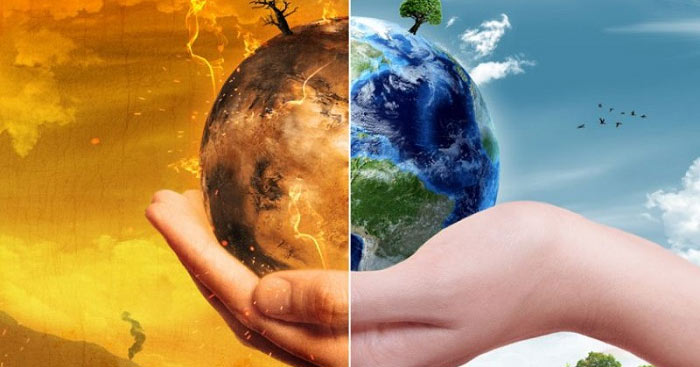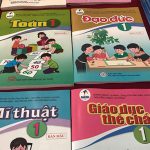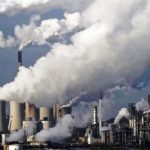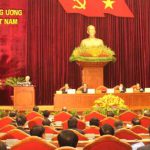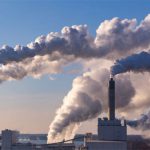Tiếng Anh 8 Unit 7: Skills 2, Giải bài tập Tiếng Anh 8 Unit 7 Skills 2 giúp các em học sinh lớp 8 trả lời các câu hỏi tiếng Anh từ phần 1→6 trang 13 SGK Tập 2 để
Tiếng Anh 8 Unit 7 Skills 2 giúp các em học sinh lớp 8 trả lời các câu hỏi tiếng Anh từ phần 1→6 trang 13 SGK Tập 2 để chuẩn bị bài Pollution trước khi đến lớp.
Soạn Skills 2 Unit 7 lớp 8 được biên soạn bám sát theo chương trình SGK Tiếng Anh lớp 8 mới. Thông qua bài soạn này giúp học sinh nhanh chóng nắm vững được kiến thức để học tốt tiếng Anh 8. Vậy sau đây là nội dung chi tiết giải bài tập Skills 2 Unit 7 lớp 8 mời các bạn cùng theo dõi và tải tài liệu tại đây.
Câu 1
Describe what you see in the pictures and talk about the relationship between them.
(Miêu tả những gì em xem trong hình và nói về mối quan hệ giữa chúng.)
Gợi ý đáp án:
– The first picture shows an algal bloom in coastal seawater.
(Hình ảnh đầu tiên cho thấy sự nở hoa của tảo trong nước biển ven bờ.)
– The second picture shows the cooling towers from a power station.
(Hình ảnh thứ hai cho thấy các tháp làm mát từ một trạm điện.)
– They are both related to thermal pollution.
(Cả hai đều liên quan đến ô nhiễm nhiệt.)
Câu 2
Listen to part of a conversation on TV between a reporter and an environmentalist about thermal pollution. Complete the diagram. Use no more than three words for each blank.
(Nghe phần bài thoại trên ti vi giữa một phát thành viên và nhà môi trường học về ô nhiễm nhiệt. Hoàn thành bảng biểu. Sử dụng không hơn 3 từ cho mỗi chỗ trống.)
Bài nghe
Audio script:
Reporter: Does thermal pollution mean that bodies of water get hotter, Mr Nam?
Mr Nam: Not always. Sometimes the water becomes colder, and that’s also thermal pollution. In general, thermal pollution means a change in the water temperature.
Reporter: That’s interesting! What causes it?
Mr Nam: Power stations are one factor. They use water in the nearby lakes or rivers to cool their equipment, which heats up the water. Then they dump the hot water back into its source.
Reporter: Are there any other causes?
Mr Nam: Yes. Thermal pollution may also happen due to the discharge of cold water from reservoirs into warm rivers.
Reporter: Thermal pollution can have dramatic effects. Right?
Mr Nam: Certainly. Most aquatic creatures need a certain temperature to survive. Warmer water has less oxygen in it, and this can harm fish populations. Besides, warmer water can cause harmful algal blooms. This can change the colour of the water like in the first picture and, more seriously, the algea poisons the fish.
Reporter: What can we do, Mr Nam?
Mr Nam: In many places, they build cooling towers like in the second picture to cool down the water from power stations.
Reporter: Anything else we can do?…
Gợi ý đáp án:
|
1. hotter |
2. cooler |
3. cool |
|
4. warm rivers |
5. warm water |
6. fish populations |
|
7. harmful |
8. colour |
9. poison |
|
10. cool down |
Thermal pollution:
– Defination: Water getting (1) hotter or (2) cooler
Causes:
– Power plants using water to (3) cool equipment.
– Discharge of cold water into (4) warm rivers.
Effects:
– (5) Warm water decreasing oxygen.
– Less oxygen harming (6) fish populations.
– (7) Harmful alga blooms being other effect.
– Can change (8) colour of the water and (9) poison fish.
Solutions:
– Building cooling towers to (10) cool down the water.
Tạm dịch:
Ô nhiễm nhiệt
Định nghĩa:
– Nước nóng hơn hoặc mát hơn
Nguyên nhân:
– Nhà máy nhiệt điện sử dụng nước để làm mát thiết bị.
– Thải nước lạnh vào những dòng sông ấm.
Hậu quả:
– Nước nóng hơn làm giảm lượng ôxi.
– ít ôxi làm hại đàn cá.
– Sự phát triển của những tảo gây hại cũng là hậu quả khác.
– Có thể thay đổi màu sắc của nước và gây ngộ độc cá.
Giải pháp:
– Xây dựng những tháp làm mát để làm nguội nước.
Câu 3
Work in pairs. Discuss the causes and effect of one type of pollution in your area. Make notes in the diagram.
(Làm theo cặp. Thảo luận những nguyên nhân và hậu quả của một trong những loại ô nhiễm trong khu vực em. Ghi chú vào biểu đồ.)
Gợi ý đáp án:
Air pollution:
Definition: Air pollution occurs when the air contains gases, dust, fumes or odour in harmful amounts
Cause: industrial watse, exhaust from car and plane…
Effect: causing diseases, death to humans, damage to other living organisms such as animals and food crops, or the natural or built environment.
Câu 4
Imagine that you two are writing an article for the local newspaper about a type of pollution in your area. One of you writes about the causes and the other writes about the effects of the pollution type you have just discussed in 3.
(Tưởng tượng rằng em đang viết một bài báo cho một tờ báo địa phương về một loại ô nhiễm trong khu vực em. Một trong các bạn viết về nguyên nhân và những người khác viết về hậu quả, sau đó thảo luận.)
Gợi ý đáp án:
Soil pollution happens when human activities destroy the earth’s surface.
Cause: pesticides, herbicides, chemical industrial watse, deforestation…
Effect: soil pollution, the upper layer of soil is damaged, effect on wild-life…
Solutions: Fine heavily people who cut the forest and those who realease chemicals waste into the ground.
Câu 5
Read each other’s work an put them together to make a complete article.
(Đọc bài của mỗi người và đặt chúng cùng nhau để làm bài hoàn chỉnh.)
Gợi ý đáp án:
Soil pollution happens when human activities destroy the earth’s surface. There are many causes leading to soil pollution. Pesticides, herbicides, chemical industrial watse, deforestation,… all are causes that make the soil polluted. The consequences are that: the soil is erosed, the upper layer of soil is damaged, and the homes for wild ainmals may disappear forever. So what we can do to resolve the problems? The goverment should fine heavily people who cut the forest and those who realease chemicals waste into the ground. Besides, we should educate people about the importance of soil and how to protect land when farming.

